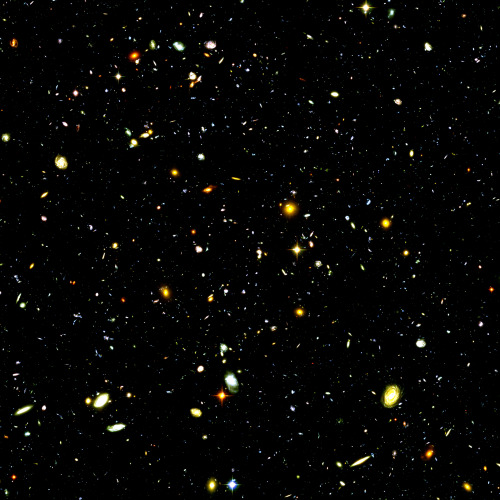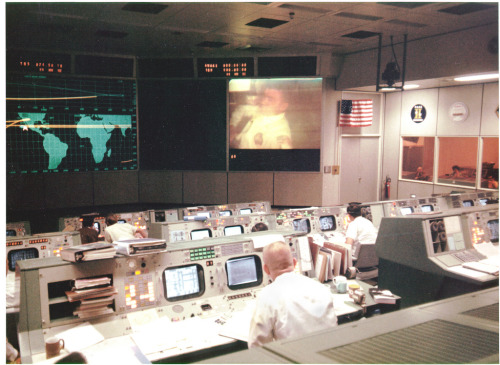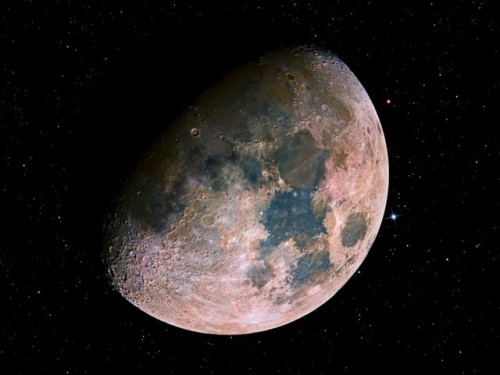Io Floating Over Jupiter With Ganymede’s Shadow [2058x2172] - For More Images Of The Cosmos Click Here
![Io Floating Over Jupiter With Ganymede’s Shadow [2058x2172] - For More Images Of The Cosmos Click Here](https://64.media.tumblr.com/b1ef902deff51335504b4561be5ba331/tumblr_p34c3lqaU31w094hwo1_500.png)
Io floating over Jupiter with Ganymede’s shadow [2058x2172] - For more images of the cosmos Click Here
More Posts from Decimatethestars-blog and Others








TODAY IN HISTORY: Apollo 16 astronauts Charlie Duke and John Young train for the Moon at Kennedy Space Center in Florida, November 30, 1971.
(NASA)
Colors of Earth
When we think of our globe from a distance, we generally visualize two colors: blue and green. Water and land. Mostly water, consequently, our planet’s nickname of the blue marble.
Traveling around the globe every 90 minutes covering millions of miles with a focused lens on our beautiful planet from 250 miles above, I’ve captured many beautiful colors beyond blue and green that showcase Earth in new and interesting ways. Some colors are indicative of nature like desert sands and weather like snow. Other colors tell stories of Earth’s climate in bright splashes of yellows and greens of pollen and muted grey tones and clouded filters of pollution.
Blue and green still remain vivid and beautiful colors on Earth from the vantage point of the International Space Station, but here are some other colors that have caught my eye from my orbital perspective.

African violet

Bahamas blues

Tropical in Africa

Yellow desert

Orange in Egypt

Red surprise

Snow white
Follow my Year In Space on Twitter, Facebook and Instagram!

This illustration shows the cosmic epochs of our Universe from the Big Bang to the Present. The position of galaxy A1689-zD1 is shown as an example of a particularly early forming and distant galaxy.
Image credt: NASA, ESA, and A. Feild (STScI).

The Hubble Ultra-Deep Field is an image of a small region of space in the constellation Fornax, containing an estimated 10,000 galaxies.
Image credit: NASA/ESA/Hubble




Bioluminescent Plankton
Scientists have only recently discovered that this type of plankton glows when they are moved because of stress - ironic when you consider how relaxing the sight of the shimmering waves are in the dark night. Bioluminescence is used as a defence mechanism to draw predators towards the creature trying to eat the plankton. The tiny flashes of light also disorientate and surprise the predator.
These tiny organisms produce light using a chemical called luciferin. The process of creating a bioluminescent light, which is simply light produced within a living creature, differs between organisms. Some need a particular food or another creature for the effect to happen. But this type of plankton, called dinoflagellates, produce luciferin on their own. The light the tiny plankton emit is called ‘cold light’, meaning less than 20% of the light generates heat.
Huge areas of the ocean can become populated by glowing plankton but the effect is especially common in warm-water lagoons that have narrow openings to the sea. This causes the plankton to gather and become trapped, causing the water to turn orange.
Image credit: Will Ho, Kin Cheung, Landscapes Maldives & eyegami
Source: Kuoni
-
 milkywayan reblogged this · 7 years ago
milkywayan reblogged this · 7 years ago -
 beautiful-heavenly-bodies reblogged this · 7 years ago
beautiful-heavenly-bodies reblogged this · 7 years ago -
 stardustll liked this · 7 years ago
stardustll liked this · 7 years ago -
 radhottubninja reblogged this · 7 years ago
radhottubninja reblogged this · 7 years ago -
 the-small-friendly-dragon reblogged this · 7 years ago
the-small-friendly-dragon reblogged this · 7 years ago -
 alextooficial-blog liked this · 7 years ago
alextooficial-blog liked this · 7 years ago -
 griseldabelba-blog liked this · 7 years ago
griseldabelba-blog liked this · 7 years ago -
 grumiothecheerleader-blog liked this · 7 years ago
grumiothecheerleader-blog liked this · 7 years ago -
 nameiscristo reblogged this · 7 years ago
nameiscristo reblogged this · 7 years ago -
 thomassicariciga1-blog liked this · 7 years ago
thomassicariciga1-blog liked this · 7 years ago -
 ac1dre1gn reblogged this · 7 years ago
ac1dre1gn reblogged this · 7 years ago -
 kamryy-blog1 liked this · 7 years ago
kamryy-blog1 liked this · 7 years ago -
 grace5764-blog liked this · 7 years ago
grace5764-blog liked this · 7 years ago -
 zoeindibidoal liked this · 7 years ago
zoeindibidoal liked this · 7 years ago -
 a-wild-blogger-appears liked this · 7 years ago
a-wild-blogger-appears liked this · 7 years ago -
 introvertedandconfusedmae-blog liked this · 7 years ago
introvertedandconfusedmae-blog liked this · 7 years ago -
 vsgroundnet liked this · 7 years ago
vsgroundnet liked this · 7 years ago -
 coffeenightz0201-blog liked this · 7 years ago
coffeenightz0201-blog liked this · 7 years ago -
 ugliswan liked this · 7 years ago
ugliswan liked this · 7 years ago -
 decimatethestars-blog reblogged this · 7 years ago
decimatethestars-blog reblogged this · 7 years ago -
 amphitrihe liked this · 7 years ago
amphitrihe liked this · 7 years ago -
 hemiplegia-on-cassiopeia-blog liked this · 7 years ago
hemiplegia-on-cassiopeia-blog liked this · 7 years ago -
 jany2103 reblogged this · 7 years ago
jany2103 reblogged this · 7 years ago -
 jany2103 liked this · 7 years ago
jany2103 liked this · 7 years ago -
 leo-leo-18-blog liked this · 7 years ago
leo-leo-18-blog liked this · 7 years ago -
 ireallydontwanttodie-blog liked this · 7 years ago
ireallydontwanttodie-blog liked this · 7 years ago -
 n00dlenerd-blog reblogged this · 7 years ago
n00dlenerd-blog reblogged this · 7 years ago -
 theshriekingofthepugs liked this · 7 years ago
theshriekingofthepugs liked this · 7 years ago -
 tina-fester-blog liked this · 7 years ago
tina-fester-blog liked this · 7 years ago -
 elegantkittycat liked this · 7 years ago
elegantkittycat liked this · 7 years ago -
 esrunyrrag liked this · 7 years ago
esrunyrrag liked this · 7 years ago -
 whenthesunsleep-s reblogged this · 7 years ago
whenthesunsleep-s reblogged this · 7 years ago
eleon / 18 / they. aspiring astronaut. lover of biology and space.
25 posts













